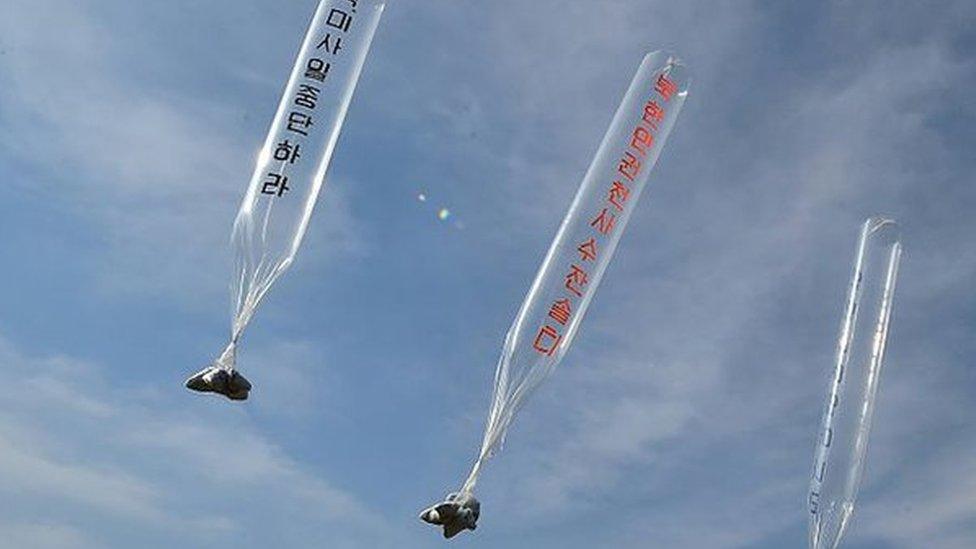South Korea takes down propaganda speakers at border
- Published
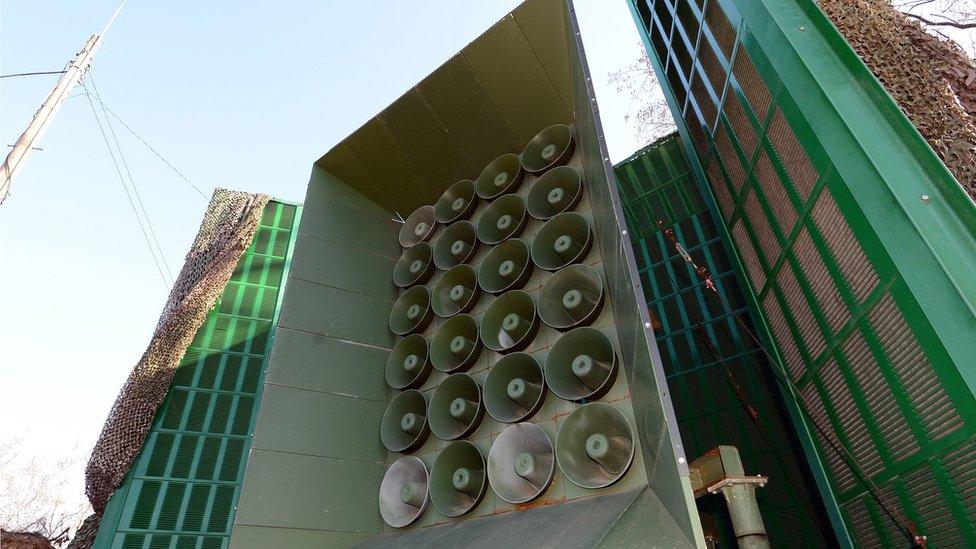
Enjoy the silence; no more propaganda and K-pop
South Korea has started taking down the loudspeakers along its border with the North and says it thinks Pyongyang is doing the same thing.
The countries have used the speakers for years to blast propaganda across their mutual border.
The dismantling is part of a string of symbolic gestures after the historic Korean summit last week.
On Friday, the two sides agreed to end hostilities and work on denuclearising the peninsula.
North Korean leader Kim Jong-un is expected to meet US President Donald Trump within weeks to discuss the issue.
South Korea's speakers were first set up in the 1960s and since have blasted everything from Korean pop music to news reports across the border. They were mostly targeting soldiers, hoping it would make them doubt the North Korean leadership.
Seoul has never confirmed how many speakers it has nor where they are. Ahead of Friday's talks, both sides had turned off the broadcasts.
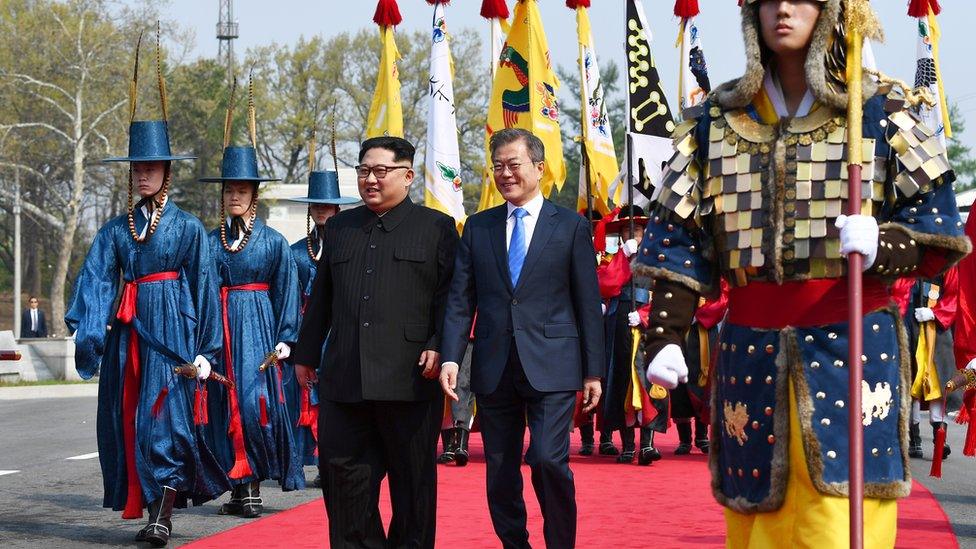
Last week's summit was the first time Korean leaders had met in more than a decade
On Tuesday, South Korea's defence ministry said its side had begun dismantling the speakers in the early afternoon.
Plastic bottles of aid cross Korean border
The ministry said activity on the northern side indicated that Pyongyang was doing the same thing.
The South had earlier described the decision to take them down as a way of building trust between the two countries.
Seoul has also asked private organisations which send their own leaflets and supplies in to North Korea to stop doing so.
The activity is seen as provocative by Pyongyang. A South Korean official asked the groups for their co-operation in implementing the summit deal.
Venue debate
The inter-Korean summit - the first meeting between Korean leaders in more than a decade - saw South Korean President Moon Jae-in sign a joint declaration with Kim Jong-un.

Key outcomes of the Korean summit
A commitment to "a nuclear-free Korean peninsula" and an end to "hostile activities" between the two countries
Changing the demilitarised zone (DMZ) into a "peace zone," including ceasing propaganda broadcasts
An arms reduction in the region pending the easing of military tension
To push for four-way talks involving the US and China aimed at turning the armistice that ended the Korean war into a peace treaty
Organising a reunion of families left divided by the war
Connecting and modernising railways and roads across the border
Further joint participation in sporting events, including this year's Asian Games


Panmunjom border village, which Donald Trump has suggested as a location for a summit
Mr Kim's meeting with Mr Trump, expected by June, would be the first ever between two sitting leaders of North Korea and the US.
No date, agenda or location have been set, though Mongolia and Singapore are thought to be frontrunners as hosts.
On Monday, Mr Trump in a tweet suggested the North-South border as a venue.
The Peace House there would be a "Representative, Important and Lasting" venue, he said.
Located on the southern side of the border but in the Demilitarized Zone, it is also where last week's inter-Korean summit took place.
- Published30 April 2018
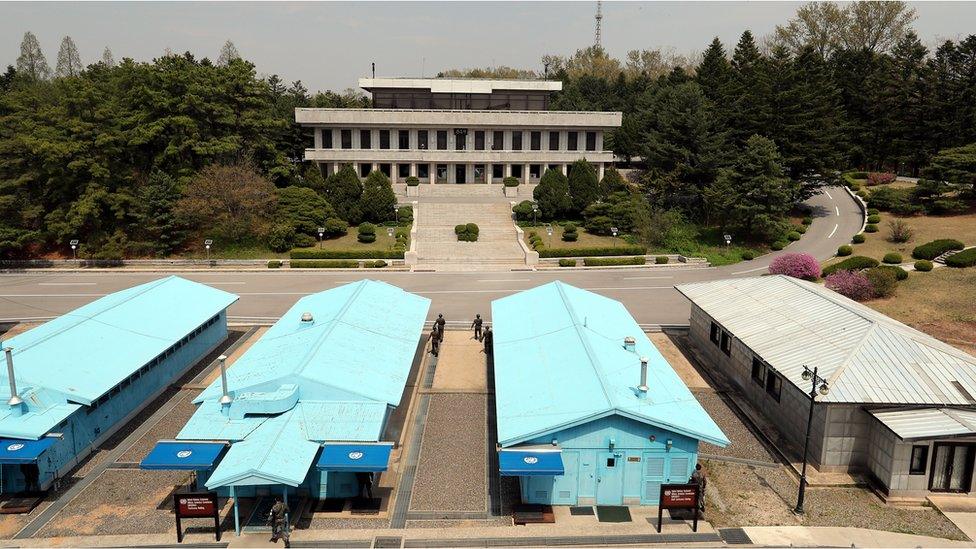
- Published30 April 2018
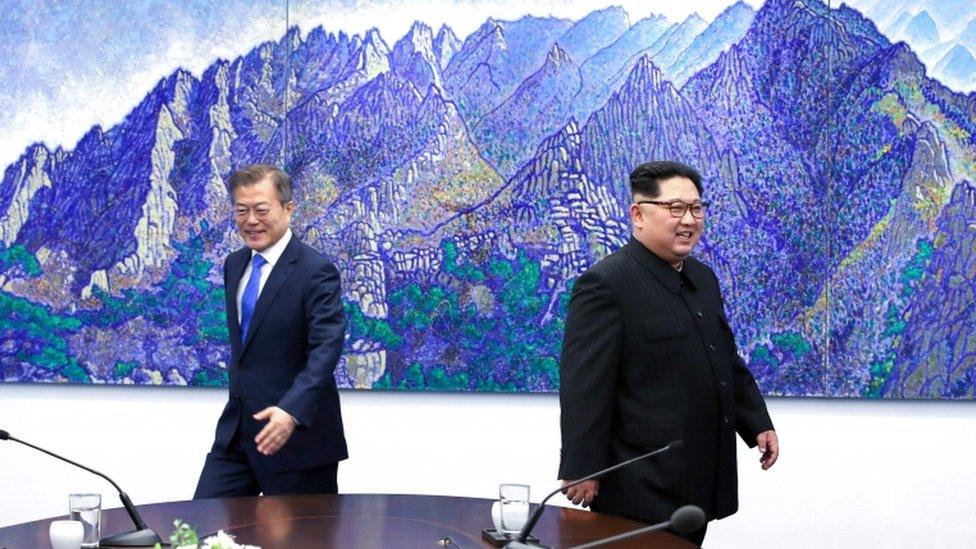
- Published23 April 2018
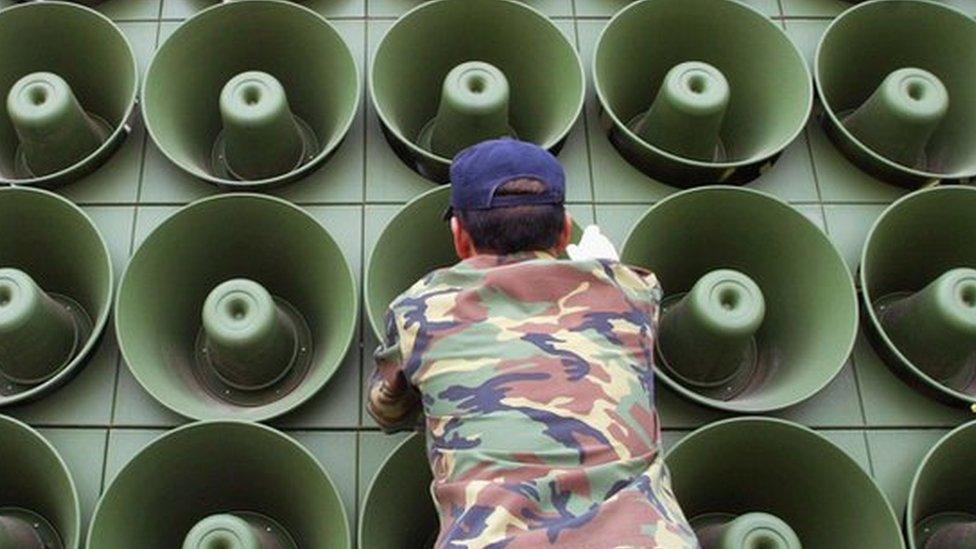
- Published25 April 2018
